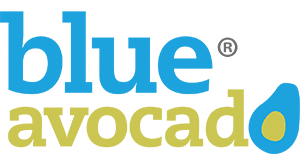From Passive to Proactive: Strategies to Move Nonprofit Board Members Beyond Meetings and Into Action
Moving board members from passive to proactive requires intentionality. By setting clear expectations, providing meaningful opportunities, and fostering a culture of philanthropy, organizations can activate their board as a powerful force for impact.

How one nonprofit transformed its board into an active, mission-driven force — and how you can do the same.
An engaged board is the heartbeat of a thriving nonprofit. Yet, too often, board engagement stalls at attending meetings and reviewing reports. To truly support an organization’s mission, board members must shift from passive participants to proactive leaders — championing fundraising, strategic planning, and governance.
During my time as a CEO, I learned this firsthand. When I took the helm, I inherited a disengaged board. Some members saw their role as merely showing up to meetings, and fundraising felt like a foreign concept. But with intentional effort, we transformed our board into an active, mission-driven force. Here’s how you can do the same.
1. Set Clear Expectations from the Start
Nonprofit board engagement begins with clarity. When board members understand their roles beyond attending meetings, they are more likely to step up.
- Create a Board Member Agreement: Outline expectations for fundraising, advocacy, and committee involvement. Have members sign it annually as a commitment to active participation. But don’t just sign it and forget it — revisit it quarterly or biannually. This will also keep down your frustration of saying, “We have the agreement,” and then realizing they don’t follow it. When you revisit it annually, tie it into your annual meeting practice so it remains consistent. I introduced this in my organization and saw immediate improvements — board members felt accountable and empowered.
- Design a Strong Onboarding Process: Provide a structured orientation that includes fundraising training, governance responsibilities, and mission alignment. I once had a board member tell me, “I didn’t know fundraising was part of my role!” After revamping our onboarding, that changed.
- Use a Board Engagement Matrix: Assess individual participation in key areas — attendance, fundraising, strategic input — and identify gaps. When I implemented this tool, we quickly spotted underperforming areas and were able to provide targeted support.
2. Shift the Mindset from Governance to Impact
Many board members see their role as oversight rather than action. A culture shift is needed.
- Move from “Board of Directors” to “Board of Ambassadors”: Board members should be vocal advocates, consistently sharing the organization’s impact in their networks. When I led a $12 million capital campaign, board members who acted as ambassadors made the biggest difference. Their enthusiasm brought in major donors.
- Eliminate the “Fundraising Fear”: Fundraising isn’t just about asking for money — it’s about opening doors. Board members can participate by identifying donors, making introductions, and stewarding relationships. I once had a hesitant board member introduce me to a key contact who later became a major donor — all without making a direct ask.
- Make Meetings Mission-Focused: Start meetings with a mission moment — share a client success story or testimonial to reinforce why the board’s work matters. In my experience, this simple practice reignited passion and engagement.
3. Create Meaningful Engagement Opportunities
Nonprofit board members disengage when they don’t see where they fit. Assign roles that align with their strengths.
- Strategic Planning Contributors: Involve board members in developing long-term goals and initiatives. I saw increased commitment when board members had a voice in shaping our vision.
- Committee Champions: Whether on finance, governance, or fundraising committees, give them ownership of projects with clear outcomes. Our fundraising committee, led by a committed board member, played a critical role in securing sponsorships.
- Special Project Leads: Engage members in specific initiatives such as corporate sponsorship outreach or donor appreciation events. One of our board members, a business executive, spearheaded a corporate partnership drive that brought in five new sponsors.
4. Foster a Culture of Fundraising
A culture of philanthropy starts at the top. Board members must embrace their role in resource development.
- Educate, Don’t Expect: Provide training on donor engagement and equip board members with talking points about the organization’s impact. I led a fundraising workshop for my board, and afterward, one member secured a $25,000 gift just by telling our story effectively.
- The “Door Opener” Strategy: Not every board member has to ask for donations, but they can connect the right people to the organization. One of my most successful fundraisers came from a board member simply introducing me to the right person.
- Celebrate Fundraising Wins: Recognize board members who successfully introduce new donors or secure sponsorships. At our meetings, we publicly acknowledged fundraising contributions — it motivated others to get involved.
5. Strengthen Board-Staff Relationships
A disconnect between board members and staff leads to disengagement. Create intentional opportunities for collaboration.
- Schedule Board-Staff Meetups: Facilitate informal interactions between board members and staff to build relationships and trust. I initiated quarterly lunches, and they became a game-changer for engagement.
- Encourage Board Members to Attend Programs: Seeing the mission in action fosters deeper investment. One board member who attended a youth mentoring session became one of our biggest advocates.
- Implement a Board Buddy System: Pair new board members with experienced members to increase retention and engagement. When we launched this, new members got up to speed faster and felt more connected.
6. Recognize and Appreciate Contributions
Engagement thrives in an environment of appreciation. Acknowledging board members’ efforts reinforces their value.
- Public Recognition: Highlight board contributions in newsletters, social media, and events. I regularly spotlighted board members, and it boosted morale and engagement.
- Exclusive Gatherings: Host an annual board appreciation event or retreat. Our end-of-year board appreciation dinner became a cherished tradition.
- Personalized Thanks: A simple handwritten note or call from the CEO goes a long way in sustaining engagement. I made a habit of calling board members to thank them personally, and it strengthened our relationships.
The Bottom Line: Engagement is a Culture, Not a Task
Moving nonprofit board members from passive to proactive requires intentionality. By setting clear expectations, providing meaningful opportunities, and fostering a culture of philanthropy, organizations can activate their board as a powerful force for impact.
Engaged boards don’t just sit in meetings — they drive missions forward. I’ve seen it happen, and I know it’s possible for any organization willing to invest in the process. Let’s build a board that leads with action.
Editors Note:
The author of this piece, Sabrina Walker Hernandez, sadly passed away on July 12, 2025. She devoted her life to serving others and the nonprofit community.
You might also like:
- A Board Member “Contract”
- Can Nonprofit Boards Vote By Email?
- Four Ways to Remove a Board Member
- Insider Newsletters: An Easy Way to Keep Your Board in the Loop and Engaged
- Board Horror Stories: How to Reduce Board Resignations
You made it to the end! Please share this article!
Let’s help other nonprofit leaders succeed! Consider sharing this article with your friends and colleagues via email or social media.
About the Author
Sabrina Walker Hernandez, President & CEO of Supporting World Hope LLC dba Building Better Boards, exemplifies empowerment and strategic leadership. With a robust background in nonprofit management and a passion for fostering leadership skills, Sabrina has empowered countless. Her workshops and Keynotes, including "5 Keys to Unstoppable Keys," have equipped over 10,000 professionals with the tools to make meaningful impacts in their organizations.
Certified in Nonprofit Management by Harvard Business School and a published author of eight influential e-books and bestselling book Successonomics, Sabrina not only educates but inspires through her "Sipping Tea with Sabrina" podcast and as editor of the Here’s the Tea Nonprofit Report.
She is a proud Rotarian and currently serves on the Board of Directors for Village in the Valley, SOS Foundation, MVEC Cares Foundations, and Museum of South Texas History and the advisory board for RGVision Media.
You can follow me on Instagram and other social media platforms: Facebook, YouTube, LinkedIn, Pinterest. You can also visit my website at www.buildingbetterboards.com.
Articles on Blue Avocado do not provide legal representation or legal advice and should not be used as a substitute for advice or legal counsel. Blue Avocado provides space for the nonprofit sector to express new ideas. The opinions and views expressed in this article are solely those of the authors. They do not purport to reflect or imply the opinions or views of Blue Avocado, its publisher, or affiliated organizations. Blue Avocado, its publisher, and affiliated organizations are not liable for website visitors’ use of the content on Blue Avocado nor for visitors’ decisions about using the Blue Avocado website.







